How Healthcare Fatigue Affects Long-Term Patient Outcomes

Understanding Healthcare Fatigue and Its Impact
Healthcare fatigue among clinicians is an insidious issue impacting patient safety and long-term health outcomes. As healthcare systems face increasing demands, the prevalence of long working hours, shift rotations, and high workload leads to physical, psychological, and emotional exhaustion among healthcare workers. Despite the critical importance of this issue, systematic management of staff fatigue remains limited compared to other safety-critical industries. This article explores how healthcare worker fatigue influences patient outcomes over time, the role of sleep deprivation, and effective strategies for managing this pervasive problem.
The Link Between Healthcare Worker Burnout and Care Quality
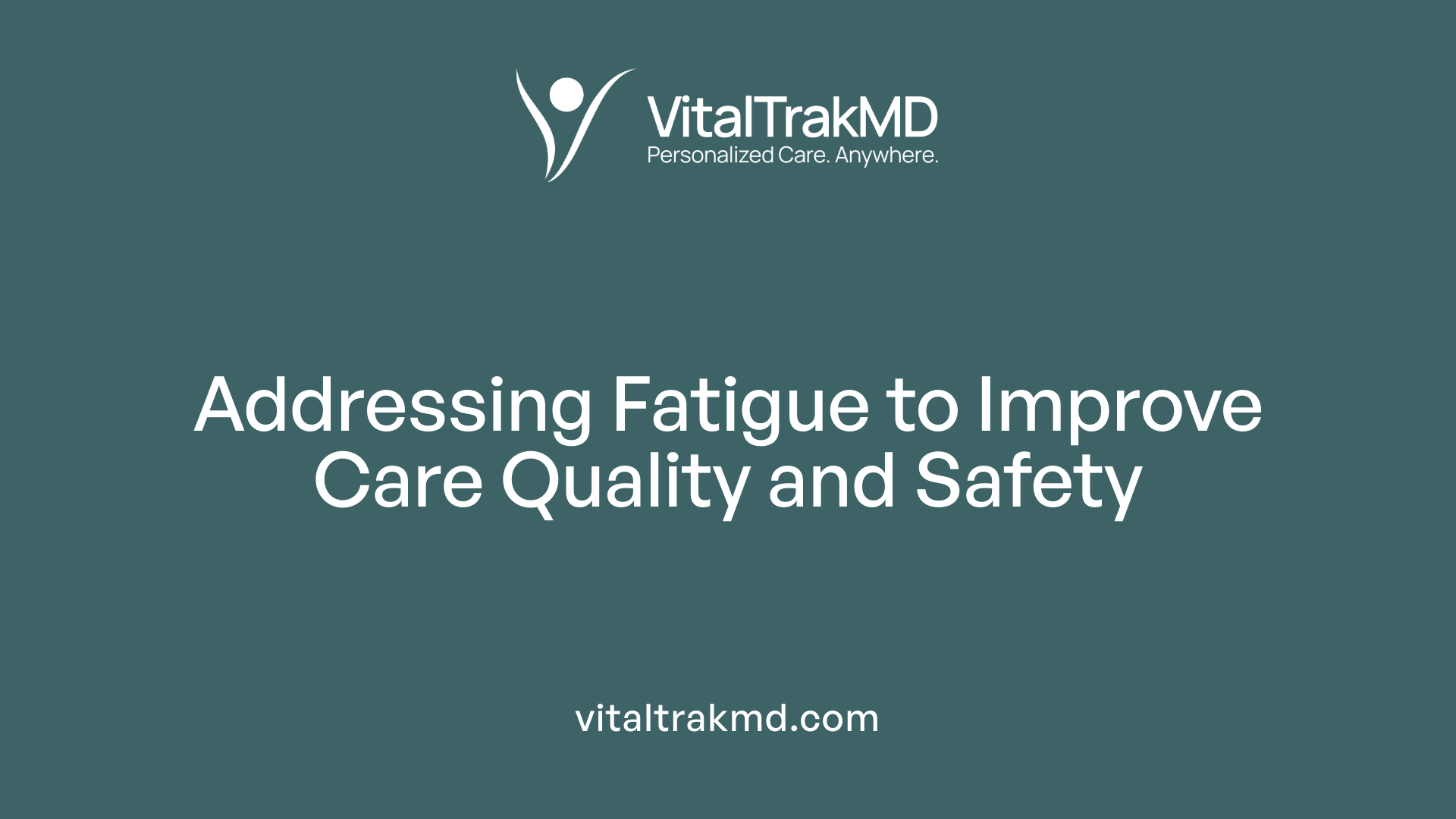
How does healthcare worker burnout and fatigue affect patient safety and the quality of care?
Burnout and fatigue among healthcare professionals pose serious risks to patient safety and overall care quality. When clinicians—such as nurses and doctors—are exhausted, their cognitive functions, attention, and decision-making abilities decline. This impairment leads to an increased risk of medical errors, including wrong medications, missed diagnoses, and procedural mistakes.
Research shows that burnout is linked to lower safety attitudes within healthcare teams, reduced teamwork, and poorer communication. These factors contribute to adverse events, higher infection rates, and patient falls. Moreover, patient satisfaction often drops when care providers are visibly exhausted and less engaged.
High workload, prolonged shifts, and inadequate organizational support are common contributors to burnout. These conditions slow reaction times and diminish clinicians' capacity to handle safety threats effectively. Conversely, interventions like better staffing, organized workflows, and supportive leadership can improve clinician well-being and reduce error rates.
If burnout and fatigue are left unaddressed, they can result in workforce shortages, disparities in care, and increased legal and clinical risks. Both individual and systemic strategies are essential to create safer, higher-quality healthcare environments.
Long-Working Hours, Sleep Deprivation, and Cognitive Impairment in Clinicians
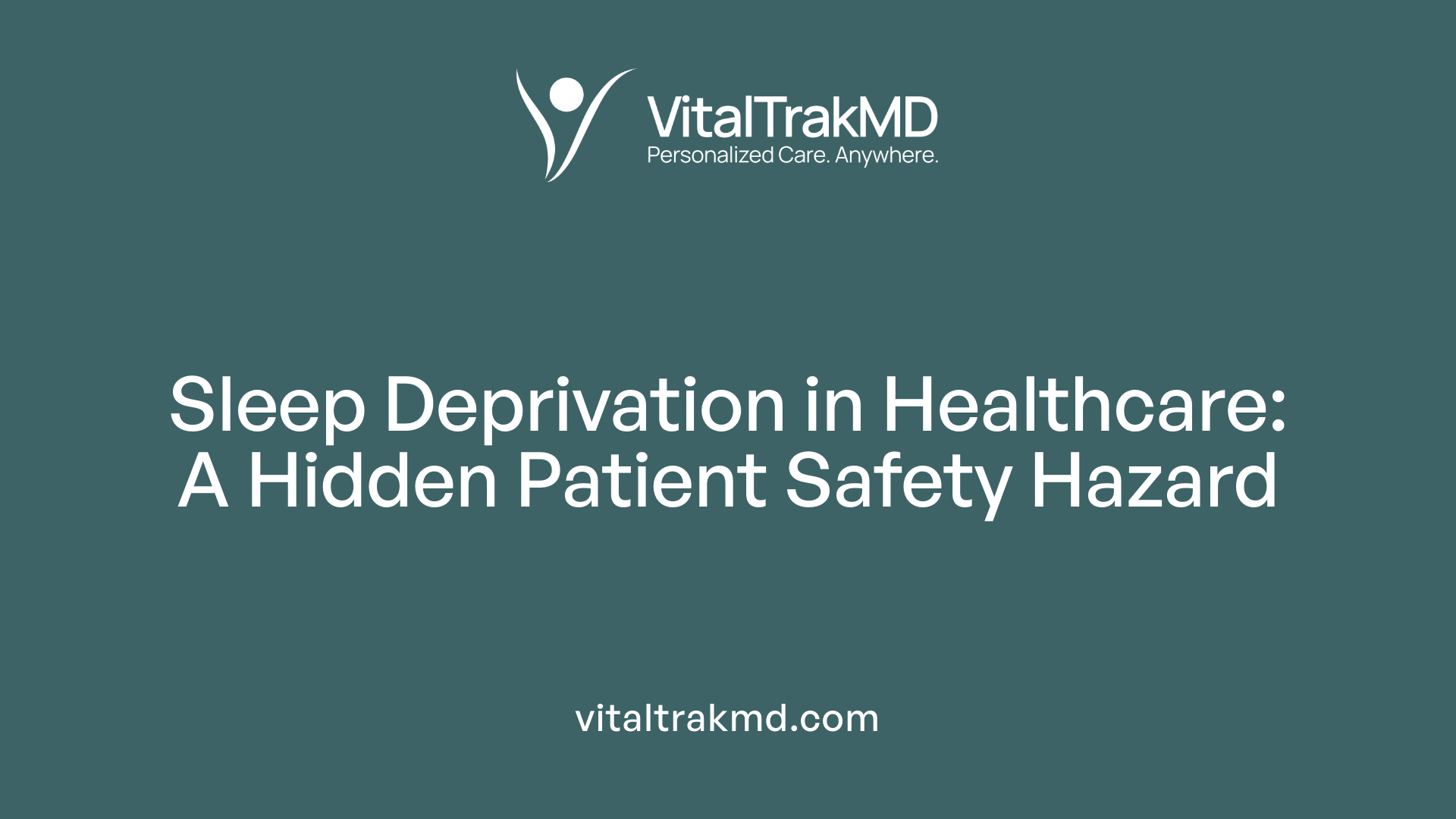
What is the prevalence of long shifts among healthcare staff?
Long working hours are alarmingly common among healthcare professionals, including resident physicians, nurses, and practicing doctors. Studies show that many healthcare workers often exceed 48 hours per week, with some residents working more than 80 hours and even over 100 hours in certain cases. Extended shifts of 12 hours or more, especially night shifts and rotating schedules, are prevalent and contribute significantly to fatigue.
The demanding nature of healthcare environments, especially during crises like epidemics or staffing shortages, leads to increased fatigue. Healthcare workers frequently report feeling worn out, with insufficient opportunities for rest and recovery. These prolonged work hours not only strain physical health but also impair mental alertness and cognitive functions.
Effects of extended hours on cognition and attention
Fatigue resulting from long shifts profoundly impacts clinicians' cognitive abilities. Research indicates that sleep deprivation and extended work hours impair attention, memory, and cognitive speed. For example, fatigue slows reaction times, reduces the ability to focus, and hampers decision-making accuracy.
Clinicians under fatigue are more prone to microsleeps—brief, involuntary episodes of sleep—or lapses in attention, which can severely compromise patient safety. Such impairments are akin to alcohol intoxication levels, illustrating the dangerous decline in performance.
Impact on clinical decision-making and errors
The consequences of fatigue on healthcare delivery are critical. Impaired decision-making and slower cognition increase the risk of medical errors, adverse events, and even patient mortality. Fatigued clinicians face difficulties in situation awareness, prioritizing tasks, and interpreting complex data—skills vital for safe practice.
Despite the clear associations, evidence regarding whether interventions like shift length reductions directly decrease errors remains mixed. Some studies, including trials like iCOMPARE and FIRST, show that flexible or shorter shifts can maintain safety without compromising standards, but results vary across settings.
Striving for safer work schedules
Strategies such as limiting shifts to no more than 12 hours, ensuring adequate rest periods (at least 10 hours between shifts), and avoiding consecutive night shifts are recommended to combat fatigue. Supportive organizational policies, including scheduling reforms and providing sleep education, are essential.
However, implementing these changes faces barriers like concerns over continuity of care and increased workload on staff. Nonetheless, adopting these measures is vital for safeguarding clinician well-being and enhancing patient safety.
The Effects of Shift Work and Sleep Deprivation on Clinician Performance
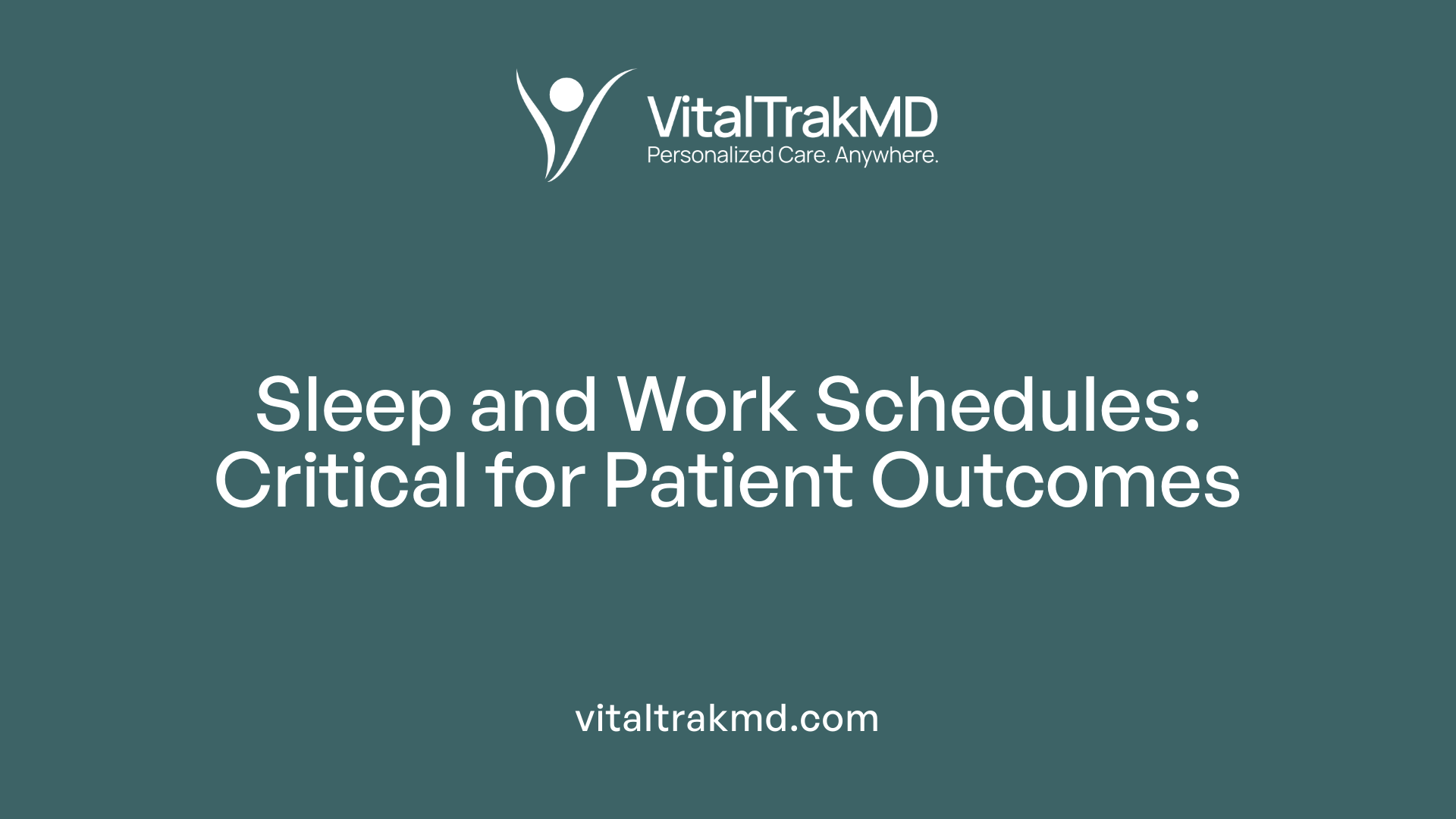
What is the relationship between healthcare fatigue, sleep deprivation, and patient outcomes?
Healthcare staff, including doctors and nurses, often work long hours and night shifts, leading to fatigue and disrupted sleep patterns. Fatigue results from inadequate or poor-quality sleep, which impairs key brain functions such as attention, decision-making, and reaction time. When clinicians are sleep-deprived, their ability to focus and process information diminishes, increasing the likelihood of mistakes.
Studies show that fatigue can lead to errors in medication administration, misinterpretation of patient data, and delayed responses, all of which can harm patients. For example, nurses working extended shifts report only about 5.2 hours of sleep, which adversely affects their alertness and performance. During high-demand periods, such as epidemics or disasters, fatigue worsens, raising concerns about patient safety.
However, the direct link between sleep deprivation and specific patient outcomes remains complex. While fatigue impairs cognitive functions and can cause errors, existing research faces limitations like variability in study designs and difficulty isolating sleep deprivation's effects from other factors. Some evidence suggests a relationship between clinician fatigue and increased adverse events, but definitive causality is still under investigation.
To mitigate risks, organizations can implement policies such as limiting shift length, promoting rest breaks, and encouraging effective sleep hygiene. Countermeasures like strategic naps, avoiding stimulants before sleep, and providing supportive environments can help reduce fatigue's impact. Despite the challenges in establishing a direct causal link, managing clinician fatigue and sleep deprivation is crucial for safer healthcare delivery.
Overall, reducing fatigue and promoting better sleep among healthcare workers are vital steps toward enhancing both staff well-being and patient safety. Continued research is needed to clarify the full scope of effects and to develop effective, evidence-based strategies.
Consequences of Long Shifts and Sleep Deprivation on Patient Care
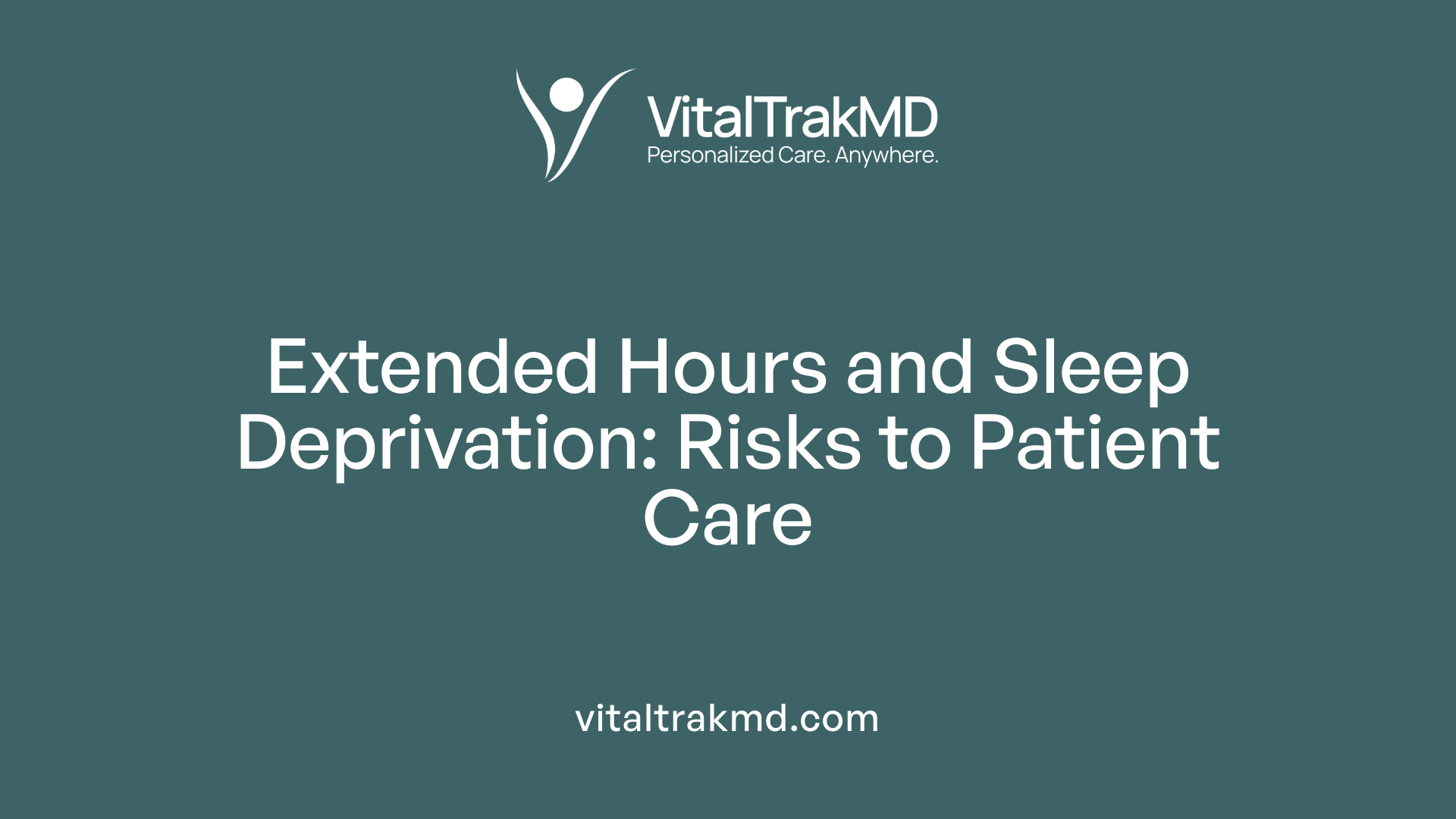
What are the consequences of clinician fatigue, such as long working hours and sleep deprivation, on patient care?
Fatigue among healthcare professionals, often caused by long work hours and inadequate sleep, has serious implications for patient safety. When clinicians are sleep-deprived or working extended shifts, their cognitive functions—such as decision-making, memory, attention, and reaction times—become impaired. This deterioration can lead to an increased risk of medical errors, including medication mistakes, misdiagnoses, and procedural mishaps.
Research indicates that fatigue can cause clinicians to overlook critical steps, respond more slowly in emergencies, and display signs of sleepiness like microsleeps or lapses in attention. In high-stakes settings like surgery or emergency departments, these lapses significantly jeopardize patient outcomes. Studies have shown that sleep deprivation correlates with higher rates of patient injuries, adverse events, and diagnostic errors.
Beyond immediate errors, extended shifts and sleep loss also contribute to burnout and emotional exhaustion among healthcare staff. This ongoing fatigue reduces overall quality of care, diminishes teamwork, and can foster a culture of underreporting errors due to a 'blame culture.'
Organizations can help mitigate these risks through scheduling reforms that limit consecutive long shifts, promoting sleep hygiene, encouraging the use of strategic naps, and implementing organizational interventions aimed at reducing fatigue. Such strategies not only protect clinicians but also enhance patient safety by ensuring healthcare providers are alert, attentive, and capable of delivering high-quality care.
Managing Fatigue: Policies and Organizational Strategies
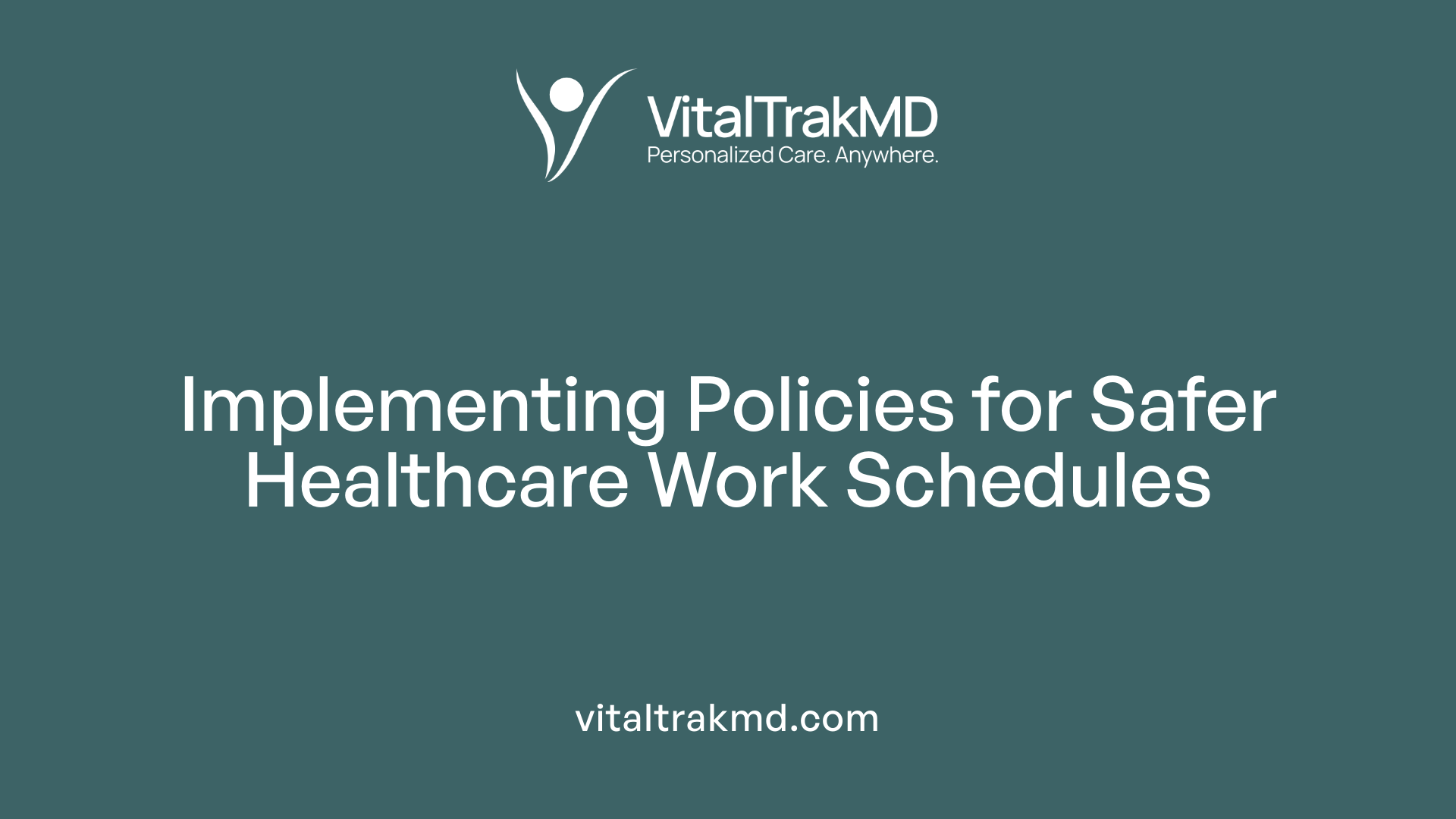
How do fatigue management strategies and policies influence patient health over time?
Fatigue management strategies and policies have a significant impact on patient health by reducing the likelihood of healthcare worker fatigue-related errors. Implementing organizational measures such as limiting shift lengths, enforcing mandatory rest periods, and adopting fatigue risk management systems (FRMS) helps staff maintain alertness and make safer decisions.
Effective scheduling reforms—like restricting consecutive night shifts and providing adequate recovery time—improve cognitive performance and communication, which are critical for high-quality care.
In addition to scheduling changes, educational initiatives that teach sleep hygiene and fatigue awareness empower healthcare professionals to recognize and address fatigue early.
Environmental controls—such as better lighting and designated rest areas—also support staff well-being, further reducing fatigue's adverse effects.
Over time, these interventions can lower rates of medical errors, adverse events, and injuries, creating a safer environment for patients.
Creating a safety culture that encourages open discussion about fatigue, normalizes rest, and prioritizes staff health leads to sustained improvements in patient outcomes. While direct causality between fatigue policies and patient harm reduction can be complex, adopting a comprehensive, organization-wide approach consistently shows benefits.
Ultimately, a strategic focus on fatigue mitigation supports both staff well-being and long-term patient health, contributing to more reliable, safer healthcare delivery.
Long-Term Implications of Healthcare Fatigue on Public Health
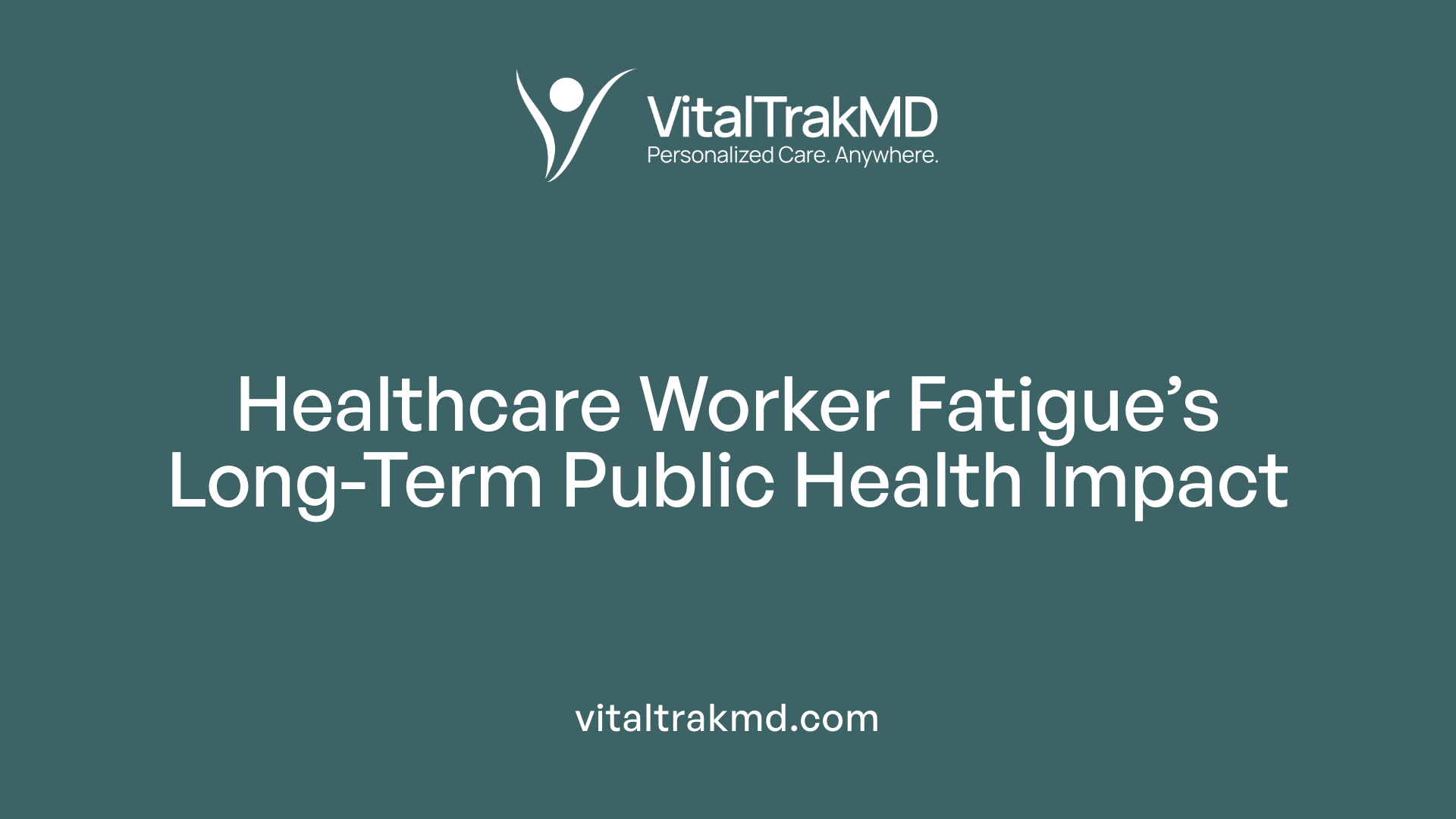
What are the broader long-term implications of healthcare fatigue on patient safety, treatment effectiveness, and overall health?
Healthcare worker fatigue extends its impact beyond immediate performance issues to broader public health concerns. Chronic fatigue among clinicians, nurses, and other health professionals can lead to long-term health problems such as cardiovascular disease, diabetes, depression, and anxiety. These conditions not only affect individual health but also threaten workforce stability and capacity.
For patients, the persistent effects of staff fatigue manifest as an increased likelihood of medical errors, compromised treatment quality, and adverse outcomes. Over time, this erodes trust in healthcare systems and diminishes overall safety standards. Patients may experience a decline in care consistency, which undermines health outcomes on a population level.
Organizationally, ongoing fatigue contributes to higher burnout rates, staff turnover, and recruitment difficulties. The costs associated with recruiting and training new staff strain healthcare budgets and resources. Moreover, frequent staff changes weaken team cohesion and safety culture.
Addressing these protracted challenges requires comprehensive systemic strategies. Implementing fatigue risk management systems, establishing standardized work hours and rest policies, and fostering supportive work environments are vital steps. These efforts aim to sustain both the health of healthcare workers and the safety and quality of patient care over the long term.
Recognizing and actively managing the long-lasting effects of fatigue is essential for building resilient healthcare systems capable of providing safe, effective, and sustainable care now and in the future.
A Call for Systemic Change and Long-Term Solutions
Addressing healthcare staff fatigue is critical for safeguarding patient safety and ensuring sustainable healthcare delivery. While short-term measures such as shift adjustments and nap strategies provide some relief, the evidence highlights the need for comprehensive, systemic solutions. Implementing fatigue risk management systems, fostering a safety-conscious organizational culture, and promoting policies that prioritize clinician well-being are essential steps. These interventions not only prevent errors but also contribute to long-term improvements in patient health outcomes, provider resilience, and healthcare system sustainability. As the healthcare industry evolves, prioritizing staff fatigue management must become a core component of healthcare quality and safety initiatives.
References
- Fatigue and Sleepiness of Clinicians Due to Hours of Service
- Healthcare staff fatigue: The unrecognised risk for patient ...
- Influence of Burnout on Patient Safety: Systematic Review ...
- Managing Fatigue During Times of Crisis: Guidance for ...
- Nurse Fatigue and Patient Safety
- The impact of fatigue in healthcare settings: a scoping review.
- Nurse Burnout and Patient Safety, Satisfaction, and Quality ...
- Fatigue, Sleep Deprivation, and Patient Safety | PSNet
- Fatigue among Clinicians and the Safety of Patients
- Fatigue risk in healthcare and its impact on patient safety
Recent articles
Want to Feel Better and Live Healthier?
Join hundreds of patients taking control of their health with personalized care that fits their life – not the other way around.
Rated 4.8/5 by 32+ customers







